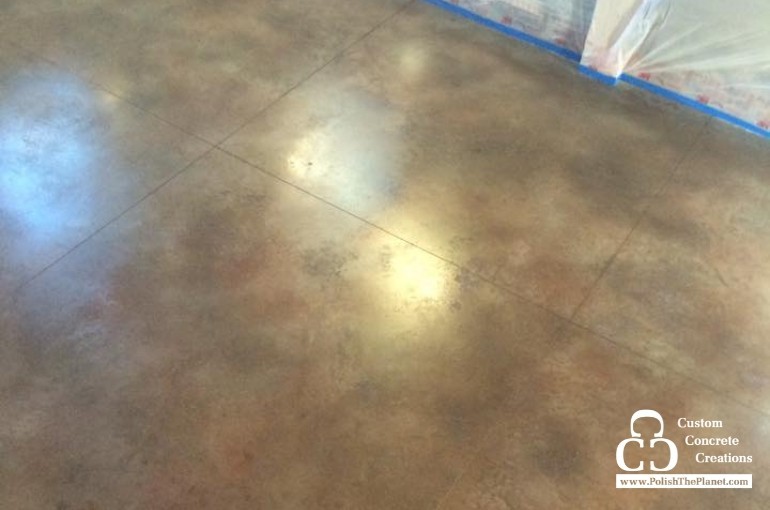
When it comes to enhancing the aesthetic appeal of concrete surfaces, designers turn to stains and dyes. Both options offer unique benefits and can transform ordinary concrete into a vibrant and attractive feature. Choosing between concrete stains and dyes can be challenging without understanding their differences and specific applications. Below we explore the characteristics, advantages and ideal uses for concrete dye vs concrete stain to help you make an informed decision for your project!
Concrete stains
Characteristics
Concrete stains are typically acid-based or water-based solutions that chemically react with the minerals in the concrete to create permanent color changes. Acid stains penetrate the surface and produce a variegated, translucent appearance, while water-based stains offer a broader color palette with more uniform coverage.
Advantages
The three main advantages are durability, a natural look and UV stability. Concrete stains are known for their long-lasting color, as the stain penetrates deep into the concrete and becomes part of the substrate. This makes them resistant to fading, peeling and chipping.
Acid stains, in particular, create a natural, mottled appearance that mimics the look of stone or marble. This makes them ideal for achieving a rustic or organic aesthetic. Stains, especially acid stains, are more resistant to UV radiation, making them suitable for outdoor applications where exposure to sunlight is a concern.
Ideal uses
Stained concrete is ideal for patios and walkways, interior floors and commercial spaces. The durability and UV resistance of concrete stains make them perfect for outdoor surfaces that require a natural, long-lasting finish.
Stains can add a unique and elegant touch to interior concrete floors, enhancing the overall design of living spaces, kitchens and basements. The permanent and low-maintenance nature of stained concrete makes it an excellent choice for high-traffic areas in commercial settings, such as retail stores and restaurants.
Concrete dyes
Characteristics
Concrete dyes are formulated using finely ground pigments or colorants that are dissolved in a solvent, such as acetone or water. Unlike stains, dyes do not chemically react with the concrete. Instead, they penetrate the surface and impart color through the absorption process. Dyes typically produce vibrant, intense colors and offer a wide range of hues.
Advantages
The three main advantages with dyed concrete are that you can achieve vibrant colors, a quick application and the customization possibilities. Concrete dyes provide a more extensive color palette compared to stains, allowing for brighter and more vibrant finishes. This makes them suitable for creative and artistic applications.
Dyes typically dry faster than stains, enabling quicker project completion times. This is particularly beneficial for commercial projects with tight deadlines. The ability to mix and layer dyes allows for endless customization options, enabling unique patterns, logos and intricate designs.
Ideal uses
Dyed concrete is ideal for interior decoration, artistic projects and refinishing. Dyes are perfect for creating eye-catching designs on interior floors, such as those in living rooms, offices and showrooms. The vibrant colors can complement various decor styles and themes.
The wide color range and customization options make dyes ideal for artistic concrete projects, including murals, logos and custom graphics. Dyes can be used to refresh and update the appearance of existing concrete surfaces, providing a cost-effective way to revitalize old floors.
Choosing between concrete dye vs concrete stains
Choosing between concrete dye vs concrete stains depends on your project's specific requirements and aesthetic goals. If you're looking for a durable, natural-looking finish with UV resistance, concrete stains are an excellent choice. On the other hand, if you desire vibrant colors and quick application with extensive customization options, concrete dyes are the way to go. By understanding the characteristics and advantages of each, you can select the best option to achieve the desired look and performance for your concrete surfaces. Contact us today to get started!
